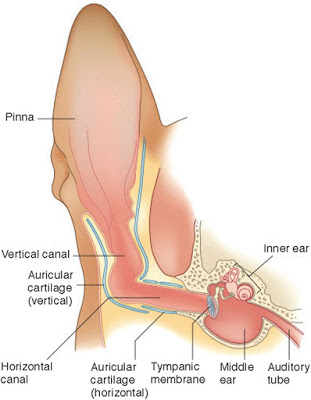
Blog
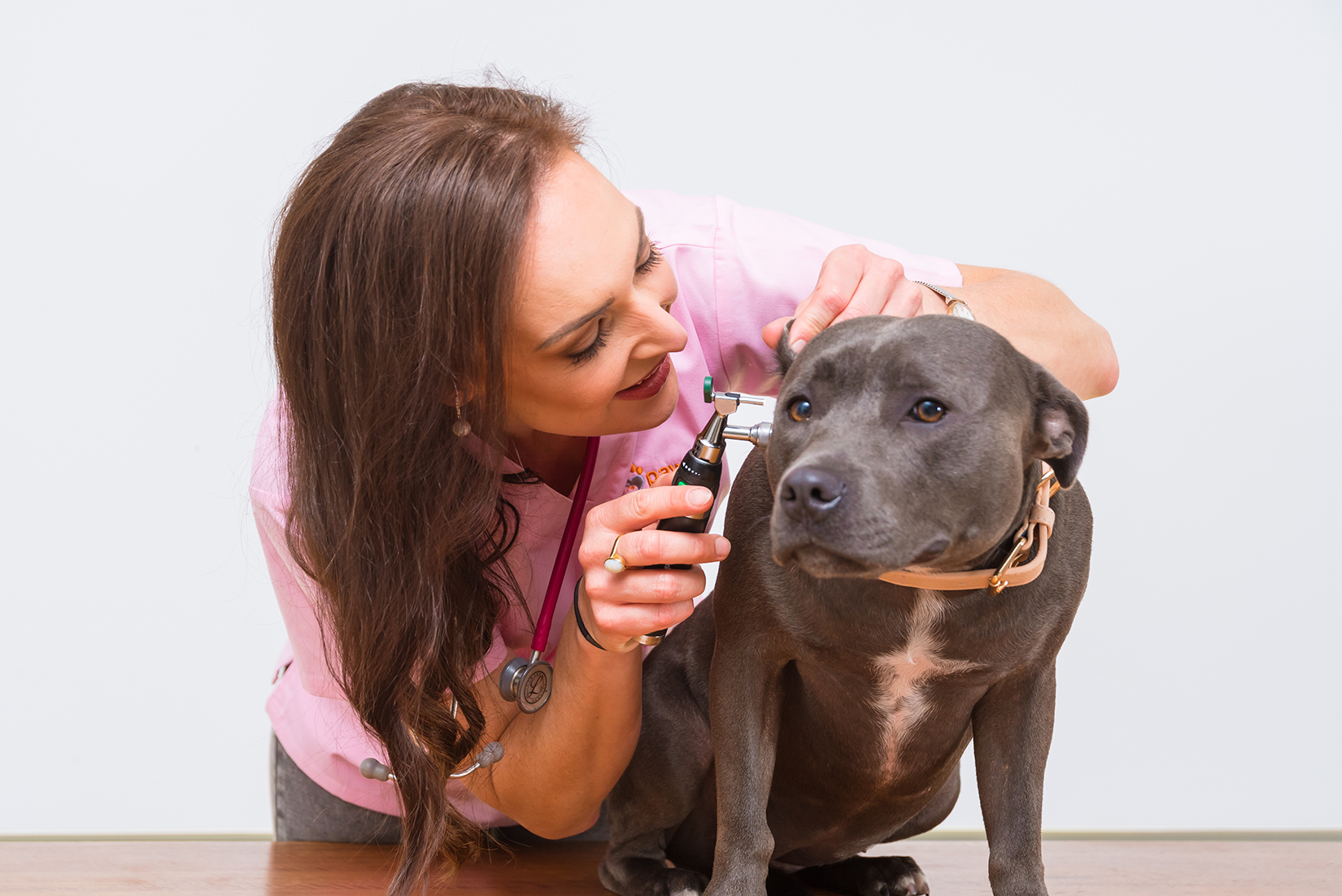
The role of food allergies in your dog’s ear infections
Featured on Australian Dog Lover
Does your dog suffer from recurrent ear infections?
“If he or she has had an ear infection more than twice in their life, then the chances are that there is an underlying food allergy at fault” explains Dr. Louisa Fenny from Holistic Vet at Home.
“But wait! My doggo doesn’t have any gut issues or signs of a food intolerance, their poos are mostly normal so … surely not?!” I hear you say.
Actually, the evidence is quite clear that if your dog has chronic (recurrent) ear infections, there is an approximately 80% chance that they have a food intolerance. There are several published studies showing a significant association between adverse food reaction and otitis externa (OE).
Essentially, there are approximately three times more dogs with Otitis Externa in a food allergic canine population than in a non-affected population. So if your dog has a food allergy, they are three times more likely to have chronic OE than if they have any other skin condition including Atopic Dermatitis.
This is very important to recognise because your dog’s itchy ears may be the only sign that your dog has a food allergy.
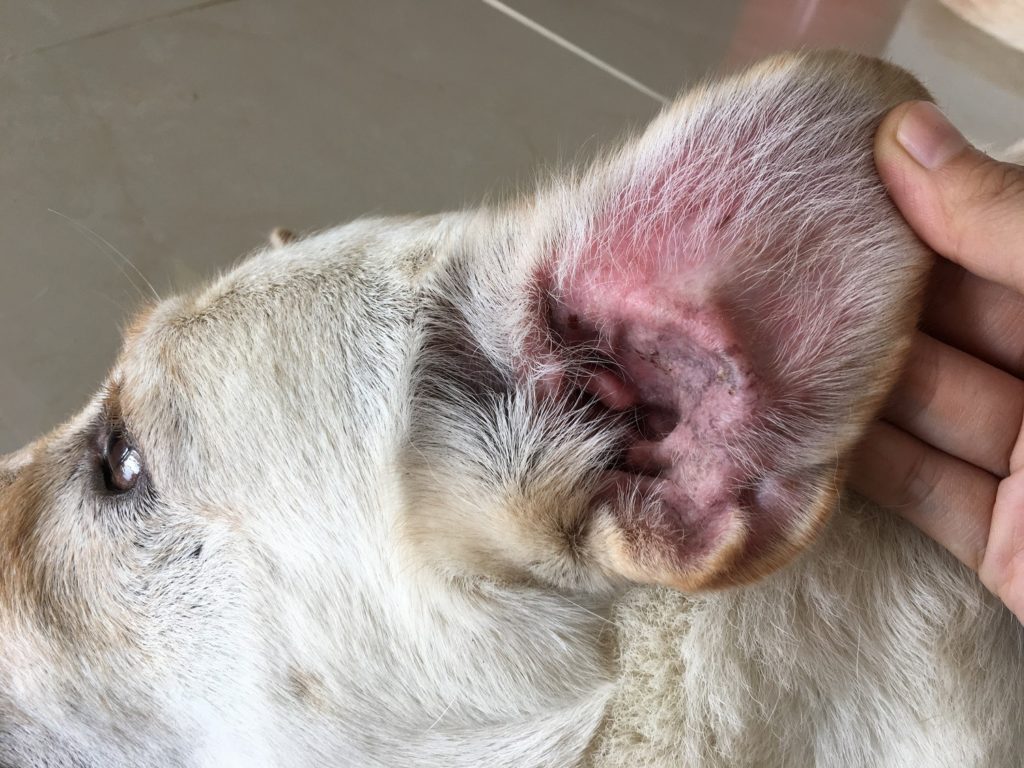
So how does a food allergy result in Otitis Externa?
The food allergy essentially acts as an immune system trigger. When your dog reacts to the food they are eating, their body goes into a state of inflammation. The immune system is activated in response to the food, leading to a cascade of inflammation in the body. This inflammation can result in itchy skin all over the body, but quite often the itch will be predominantly inside the ear canal.
The worse affected dogs will get itchy around the face and eyes and/or their paws.
Because the ear canal is an enclosed environment, when the skin becomes inflamed, it becomes a warm and humid environment, and hence the perfect breeding ground for bacteria and yeast to flourish.
Hence itchy ears are often the precursor to an ear infection, or Otitis Externa.
Dogs that have narrow ear canals, or ear canals filled with hair. Most Poodleand Poodle-cross dogs (so anything ending in “oodle”) will generally grow a lot more hair down their ear canals, hence these breeds often are affected.
However, sometimes dogs will have only itchy ears, so when the vet looks down the ear canal and declares it is a little pink but definitely there is no sign of an infection, it can be quite frustrating for pet parents who have been watching their poor doggo scratching at their ears incessantly.
But what if my dog doesn’t have any gastrointestinal (GI) signs?
The evidence also shows that an expression of chronic otitis externa (i.e. recurring ear infections or even just itchy ears) can be even more common than GI signs in dogs with a food allergy. So even if your dog does not suffer from vomiting or diarrhoea, if they have had recurrent ear issues then a food intolerance is highly likely.
In fact, in around 20-25% of dogs, the itchy ears can be the only clinical sign of a food allergy. So even if your dog has perfect gut health, and isn’t itchy anywhere else, there is a good chance they have a food intolerance.
Subtle GI signs such as borborygmi (a noisy grumbly tummy), burping and flatulence may be all that is noticeable. So if you have a ‘farty-pants’ dog in the house, the great news is that your household may no longer suffer the stink-bombs if your pets’ food intolerance is diagnosed and corrected.
Going back to the evidence-based publications on this topic, anywhere from 50 to 60% of dogs will present with GI clinical signs, but often the clinical signs are quite subtle.
Interestingly, a lot of my pet parents consider a burpy farty dog to be totally normal. But the fact remains that an over-production of gas in the gut which causes these signs, is actually indicative of an unhappy, unbalanced and inflamed gastrointestinal tract and it is well worth investigating the cause and correcting any underlying imbalances.
In fact, these signs are indicative of chronic inflammation in the body. And any kind of chronic inflammation is a pre-cursor to the C-bomb… You got it, Cancer!
So if you think your dog might have a food intolerance… what next?
In pets, the only reliable way to diagnose a food intolerance is by doing a Diet Elimination Trial.
Now I know you may be annoyed to hear this because I see so many pet parents who have tried to undertake a trial diet and failed. Or probably even more commonly, you have conducted one and it seemed to make absolutely no difference.
But please read on, because the chances are that the trial was not completed correctly, which I also see very commonly. For example I see a lot of pet parents whom undertake the diet trial but forget that their monthly medication is a beef flavoured chew!
However the good news is that it might be more simple to complete than you think or previously experienced. And if you’re going to potentially be preventing cancer in your fur-child… well, surely it’s worth giving it another crack right?!
What are the challenges in completing a Diet Elimination Trial?

- Compliance: e.g. fussy pets, time-poor pet parents
- Sourcing the right protein reliably
- Feeding multi-pet households
Unfortunately, there are simply no tests that are reliable for the diagnosis of food allergy in dogs, cats or horses, unlike for humans.
Whilst there is some positive evidence for lymphocyte blastogenesis testing in dogs [2], it’s an expensive methodology and it’s not commercially available.
Hence at the moment, elimination diets are considered to be the most accurate method of diagnosing a food allergy.
How to Conduct a Food Elimination Trial
Step One: Choose a Commercial or Home-prepared diet
This decision will depend on whether you have the time, energy and finances to prepare a home prepared diet or if you will need the convenience of a commercial hydrolysis diet.

Of course a home-prepared diet of fresh, whole foods will always be preferable as they will naturally contain a higher quality of nutrients than a commercially prepared product.
However, it is more important to set yourself up for success by choosing whatever is going to be feasible for you and your pet to comply with.
So really, the best diet is going to be the one you can reliably stick to for 5-9 weeks.
I know for myself that some days or weeks I barely have time to prepare food for myself, so no judgement at all if it is simply not feasible for you to be home preparing food for your fur child as well as the rest of your family.
Or if you’re a vegan and cannot bear the thought of handling meat, then this is totally understandable also. I personally feel so sad every time I handle certain types of meat and meat products, everyone is different in what they can cope with!
Downfalls of commercial hydrolysis products
These products are made by breaking down the parent protein into the individual amino acids which, in most cases, do not trigger the immune system as the parent protein would.
However, depending on nature of the hydrolysis, there are still some dogs and cats that will continue to react.
Also, there are some brands of commercial hydrolysis food that utilise poultry liver and there is published evidence showing that chicken-allergic dogs and cats that will react to this and continue to scratch.

Furthermore, it is important to avoid any dried products as dogs commonly react to the dust mites in the dried packet food.
You might also struggle to find a commercial product that your dog likes as they are often not very palatable!
Step Two: Choose your protein source
If undertaking a home-prepared diet, it is vital to select a protein source that your dog has not been previously exposed to.
A few years back, this was quite easy, however in recent years, manufacturers have been using a wide range of different proteins in regular pet food products including lamb, goat, venison, duck, rabbit and kangaroo. Hence these proteins may no longer be appropriate for using in the trial.
Furthermore, there is also the potential for cross reactivity between ruminant based proteins, for example venison and goat. Likewise with poultry products, hence pets with allergies to chicken may also have cross reactivity with other poultry products including duck and turkey.
I recommend speaking to your local butchers and pet meat stores to see which protein sources they can source consistently for 2-3 months. There are also some great Facebook groups around Australia that can help with sourcing.
Before buying 2 months of meat and a chest freezer, I recommend bringing home a small amount of all of the meat options (if there is more than one!), and seeing which one your pet likes the most.
Step Three: Choose your carbohydrate source
Evidence suggests that the proteins are more important than the carbohydrates. However, if you look at the published evidence, wheat and soy allergies have been reported, so these definitely need to be avoided.
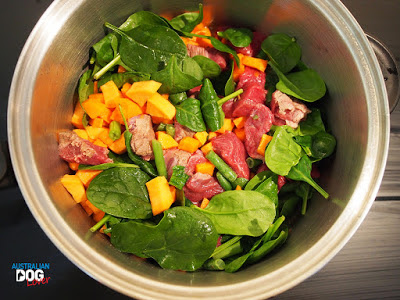
sweet potatoes, green beans and spinach
Most commonly we use potatoes, sweet potatoes, barley, squash, peas, tapioca, or pumpkin.
However if your dog has a weight problem which is more often the case than not, then I would recommend picking a less starchy vegetable and stick to a leafy green or cruciferous vegetables which will have the added benefit of providing extra anti-oxidants and cancer-preventing benefits as well as being lower calorie.
If your pet is going to be on a special diet then they might as well be losing weight and boosting their immune system function at the same time!
It is also important to ensure the diet does not include denatured corn starch which can be problematic.
Step Four: Get everyone on board
It is vital to ensure that everyone in the household, your dog walker and neighbours are aware that they must not sneak your dog any treats at all unless they are from the chosen protein.
If your pet accidentally (or on purpose!) eats even a crumb of something they shouldn’t have, you need to go back to day zero. So it may take a few attempts!
Step Five: Feed your chosen diet for 8 weeks
And this means absolutely nothing else at all!
Make absolutely sure that you cut out the following:
✔️ ALL treats unless they are 100% dehydrated meat from your chosen protein
✔️ all dietary supplements and flavourings
✔️ chewable parasite preventativemedications
✔️ ANY chewable or flavoured medication
✔️ single flea medications
What results should I expect?
The good news is that 50% of dogs will be mostly better at the end of week five, and then there will be increasing percentages of improvement, the longer the time spent on the elimination diet.
By the end of week five, there will be some dogs that need to go to the end of week 8.
Only about 5% of dogs with confirmed food allergies need to be fed an elimination diet a little bit longer than 8 weeks.
Looking at the research, cats can take a bit longer, but still mostly will have an improvement to their condition within six weeks.

Is there any concern about missing micronutrients that might be lacking in an imbalanced diet for this time period?
For adult dogs and for that period of time, there won’t be any issues. However for a rapidly growing giant breed puppy, yes there can be issues as they have a very high requirement for calcium AND phosphorus for their rapidly growing bones.
Hence it is important to work together with a Vet or Vet nutrition specialist if your dog needs to undertake this diet trial before they are fully grown. This means around 2 years for giant breeds and one year for small breeds.
Step Six: Challenge time!
Once there is complete remission of clinical signs, i.e. no itching and no gut signs as mentioned above, then it is time to challenge your dog with the foods they previously ate before.
It is important to feed all elements of the previous diet including anything of the supplements, meds, treats that were being fed prior to the onset of the elimination diet – refer back to the list above.
Because any of these items could be the primary source of the allergies as well as the food itself!
When to expect an adverse food reaction?
A reaction to the food can be observed as soon as 15 minutes after feeding, all the way through to 14 days. So it is important to make sure you going to be able to observe your dog for any itching for this time period.
However the published literature shows that in around 75% of dogs, there will be a reaction within one to three days.
So, if you have the original diet for two weeks, and your dog hasn’t changed all, then congratulations, you can safely assume that your dog does not have a food intolerance.
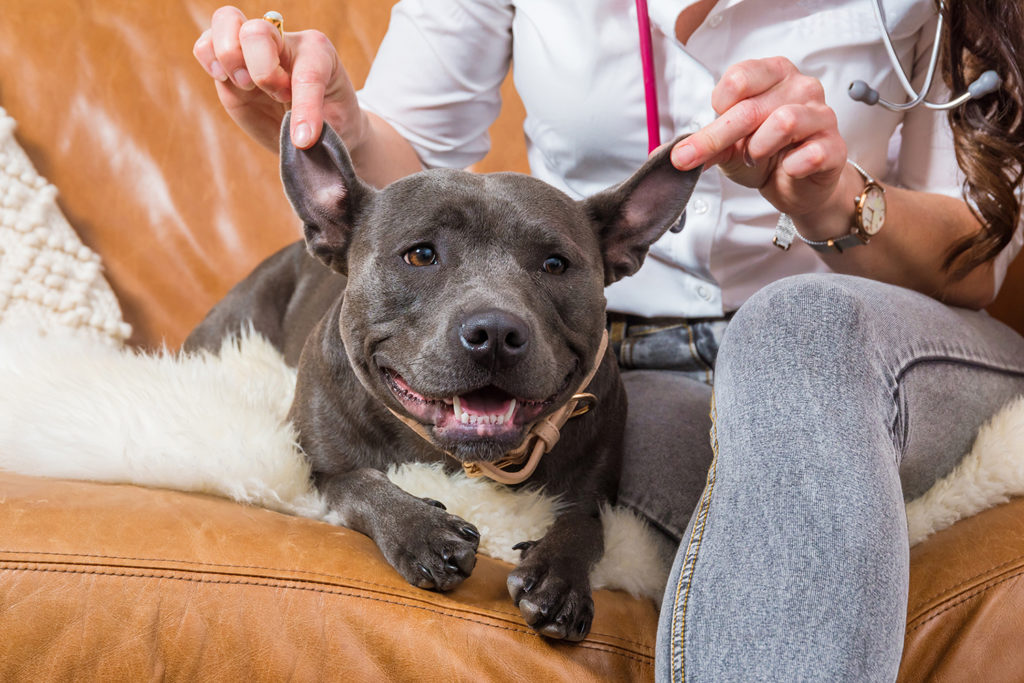
However if there has been any reaction at all, you will need to reinitiate the elimination diet.
Once the itchiness has resolved again, we need to repeat the challenge, but this time with the individual proteins and then the individual carbohydrates.
Beef and chicken are the two most common proteins that cause an allergic reaction hence I suggest starting with these.”
To summarise, if your dog suffers from any kind of allergic skin condition, it is well worth the time and effort in conducting (or repeating ) a food elimination diet trial. However if your dog has chronic ear issues, it is absolutely essential to conduct this properly in order to achieve successful long term management. Get your pet/s started on their weight loss journey by downloading her e-book The Beginners’ Guide to Feeding your Pet Naturally here. You’ll save $5.00 when you use the special promo code DogLover.
written by Dr Louisa Fenny (May 2021) for Australian Dog Lover (all rights reserved).
About the Writer
Dr. Louisa Fenny graduated from Murdoch University in 2005 and is a member of the Veterinary Surgeons Board of WA, NSW and QLD. Her business Dr Lu – Holistic Vet at Home provides a unique service to pet owners around Australia whom want to take a natural approach to their pet care.

After 10 years in conventional vet practice, Dr Lu became frustrated with the lack of results that traditional medicine provided for chronic health issues, and increasingly concerned with the side effects of mainstream drugs and routine care chemicals. This led her to expand her studies in Veterinary Herbal Medicine and is thrilled to be getting long term results by incorporating natural diets, evidence-based natural therapies and reduced chemical protocols into her patients’ treatment plans.
Dr Lu offers home visits to pet parents in Northern Rivers NSW & Gold Coast QLD, and video consults to pet parents Australia wide.
Dr Lu is passionate about wildlife conservation and spent several weeks volunteering with the bushfire-affected wildlife on Kangaroo Island in January 2020.
Louisa also featured alongside her veterinarian dad, Rick Fenny in national TV show Desert Vet which is currently filming Season Two.For more information, please visit https://www.drlu.com.au You can connect with her on Facebook at www.facebook.com/drlufenny/ or on Instagram at www.instagram.com/drlufenny_holisticvet/
References
[1] Dr Mandy Burrows, Dermatology Specialist, Pure Animal Podcast 6/10/20
[2] J Vet Intern Med 2004;18:25–30 Lymphocyte Blastogenic Responses to Inciting Food Allergens in Dogs with Food Hypersensitivity
https://onlinelibrary.wiley.com/doi/pdf/10.1111/j.1939-1676.2004.tb00131.x
[3] Nutrient digestibility and fecal characteristics, microbiota, and metabolites in dogs fed human-grade foods Sungho Do, † Thunyaporn Phungviwatnikul, † Maria R. C. de Godoy, †,‡ and Kelly S. Swanson†,‡,||,1 Journal of Animal Science, 2021, Vol. 99, No. 2, 1–13

